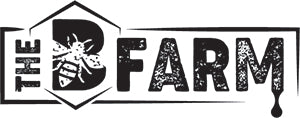Every beekeeper knows that sinking feeling when something seems off in the apiary. The hive that once hummed with life now feels different, and you can’t quite put your finger on why. Understanding the signs your hive is queenless and what to do about it can be the difference between saving your colony and watching it dwindle away. The sooner you identify these warning signs, the better your chances of helping your colony recover and thrive.
The Tell-Tale Sounds of Distress
A healthy hive often produces a steady, contented hum that experienced beekeepers recognize immediately. When a colony loses its queen, this familiar sound changes dramatically. Queenless bees create a higher-pitched, more agitated buzzing that sounds almost frantic. Some beekeepers describe it as a “roaring” sound that’s distinctly different from normal hive activity. This change occurs because worker bees become increasingly anxious without their queen’s calming pheromones, and their distress becomes audible even from several feet away.
Behavioral Changes
Worker bees in a queenless colony exhibit distinctly different behaviors as well. Without their queen’s organizing influence, the colony’s social structure begins to break down in observable ways. Queenless bees often appear restless and disorganized, moving about the frames without the purposeful direction typical of a healthy colony. Worker bees will also lose motivation to collect pollen and nectar when they sense their colony’s future is uncertain.
Physical Evidence in the Hive
The most obvious physical sign you can see in a queenless hive is the absence of eggs and young larvae. However, you need to consider timing carefully since eggs only remain visible for about three days after laying.
Look for emergency queen cells as well, which appear as elongated, peanut-shaped structures typically built on the face of the comb rather than along the bottom edge. These cells indicate the workers are attempting to raise a new queen from existing young larvae.
Taking Action to Save Your Colony
Once you’ve confirmed your hive is queenless, quick action improves your chances of success. If you discover emergency queen cells that appear healthy and well-constructed, you might choose to let the colony raise its queen. Alternatively, you can introduce a purchased queen, which provides faster results and higher success rates.
Are you searching for high-quality, healthy queen bees for sale online? The B Farm has got you covered! We take pride in providing strong, productive queen bees that will help your hive thrive. Look no further! Your perfect queen bees are just a click away.
Restoring Balance to Your Apiary
Successfully identifying and addressing queenless hives requires patience, observation skills, and decisive action. The signs your hive is queenless and what to do about it become clearer with experience, but even beginning beekeepers can learn to recognize the most obvious indicators. Whether you choose to let your bees raise their queen or introduce a purchased one, acting quickly gives your colony the best chance of recovery and continued productivity.
